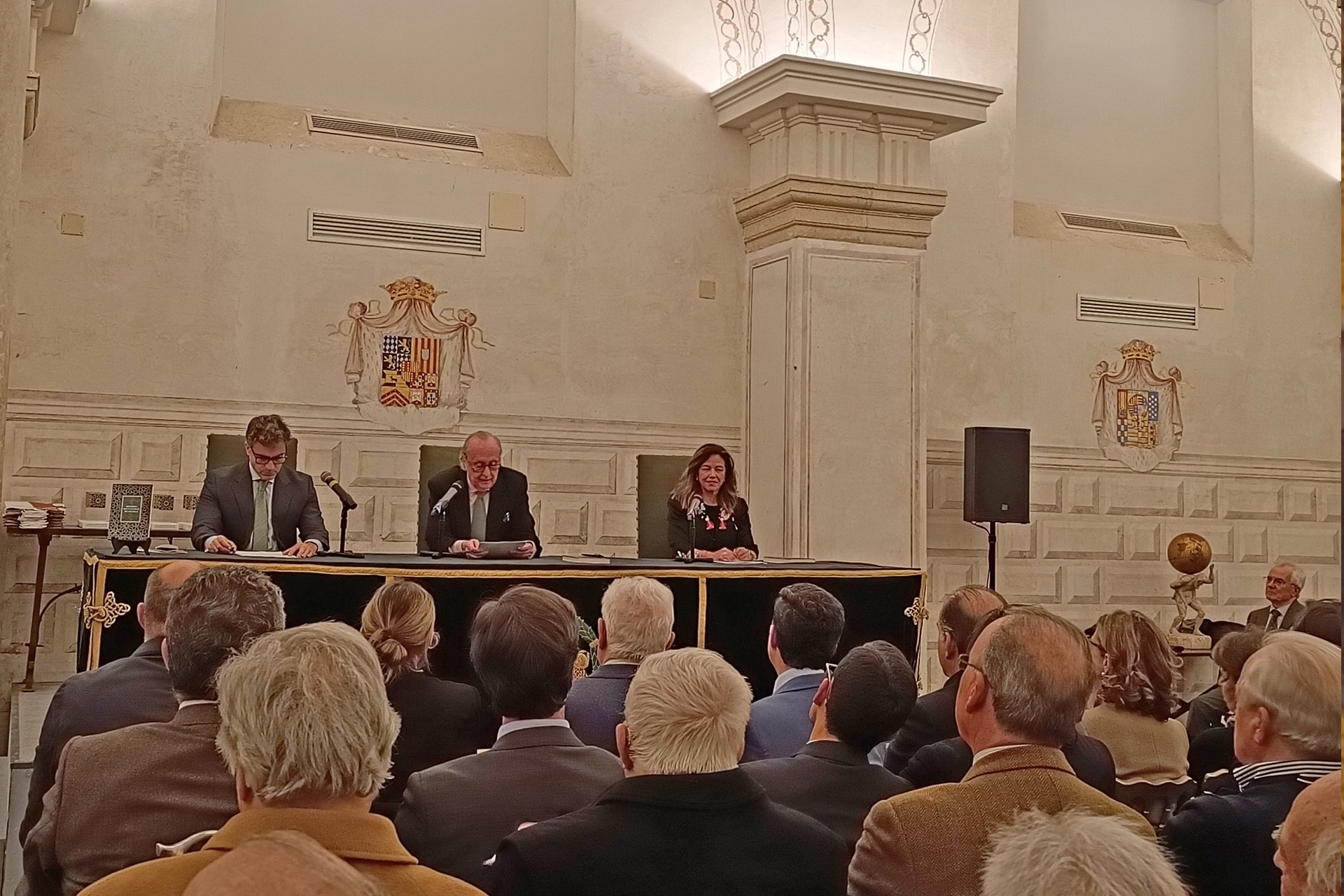Presentation of the book History of the city of Seuilla by Francisco Geronimo Collado published by the Colegio Oficial de Aparejadores y Arquitectos Técnicos
The Casa de Pilatos was the setting chosen for the presentation on Monday 22 January, of the book History of the city of Seuilla by Francisco Gerónimo Collado, which commemorates the 50th edition of the collection Tile. This collection, which has been published by the Colegio de Aparejadores de Sevilla since 1973, was founded by Joaquín Ruiz Romero Founding member and trustee of the Foundation of the Official College of Quantity Surveyors and Technical Architects of Seville, nephew of the distinguished Joaquín Romero Murube.
The work presented, which dates from 1796, has been prefaced by His Excellency the Duke of Segorbe, D. Ignacio Medina y Fernández de Córdoba, who opened the event together with the president of the Official Association of Quantity Surveyors and Technical Architects of Seville, José Manuel Flores and the vice-president of the Fundación Aparejadores, Helena Ruiz. In his prologue, the Duke of Segorbe explained that when, a little over a year ago, a delegation from the aforementioned College came to see him to choose a work for publication in the collection "Tile" to commemorate, as mentioned above, its fiftieth anniversary. The work would have to meet the following conditions: It had to be a generic work on the history of Seville, preferably from my library and, if possible, unpublished. In the end, they opted for a rare typewritten copy entitled "The history of Seville".Historia desta ciudad de Sevilla que escribió el licenciado Collado", The book came into his hands as a gift from the bookseller Luis Bardón, a great friend of his with no other reference than that it belonged to Maese Farfán.
The attraction of the manuscript is that it had two concomitant qualities. On the one hand, it was the last link in a chain of copies that, since the 17th century, had been passed from library to library until they reached his library by chance, a process whose links could be reconstructed as a reflection of a history of Sevillian bibliophilia.
On the other hand, it evoked a scholarly practice of transferring and circulating manuscripts which, with our master Farfán, had reached the 20th century. The dissemination function that these manuscripts had is inherited and, to a certain extent, democratised by modern facsimile copies, a means of dissemination that the Azulejo collection honourably serves.
But this work also has a third virtue, that of recalling a person of singular merit, who, not by birth but by his self-taught will, became an intellectual figure characteristic of the historicism that permeated the cultural and cultural life of Seville during the Restoration, Francisco de Paula Farfán Ramos, better known as Maese Farfán.
In the words of its president, José Manuel Flores The Azulejo collection has been carrying out important and silent literary work by recovering unpublished copies of Sevillian works in facsimile editions. The addition of this valuable publication to its library will contribute to increasing its prestige.
The event was attended by the Town Planning Delegate of the City Council of Seville, Juan de la Rosa; the Vice-Minister of University, Research and Innovation, Lorena Garrido; the president of the ETUCMiguel Rus; and the managers of Urbanismo and EmvisesaFernando Vázquez and Manuel Morillo, and the prologuists of the entire collection were also invited. As a souvenir, a numbered book was given to all those attending the presentation.

